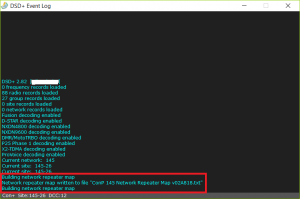http://forums.radioreference.com/unication-forum/368547-g5-phase-2-simulcast-tower-switching.html#post2913079
Whenever you are receiving a simulcast signal, there will be areas where there might be signal cancellation due to the phase difference between one site and another. This is similar to multi-path where one signal arrives directly to the receiver and another arrives later because it has been reflected from the ground or an object like a water tower or building. That phase difference causes the amplitude to drop*. I assume the “Bars” on the G5 respond to signal strength as I describe this. If they respond to bit error rate (BER), then the same multipath effect also results in a high bit error rate either by reduced amplitude, a phase difference in the bitstream or both.
Your radio is not “switching towers, it is responding to an aggregate of multiple signals.
To complicate this, in FM systems, there is a phenomenon called FM capture ratio which is a point where the receiver will favor the stronger signal and ignore the rest. In linear simulcast on narrow band channels, FM capture ratio requires a very large differential in signals, meaning you would need to be very close to a tower.
* In analog systems, while in motion, this multipath exhibits as a “picket fence” popping noise pulse at regular intervals. The higher the frequency (shorter wavelength) , the more frequent the noise.
I expect that when the Uniden SDS100 gets released, dipshits are going to immediately start comparing it to Unications and commercial radios, and somebody is going to find a time when their SDS100 just isn’t copying a simulcast with zero errors. Let this post serve as a reference that even the best radios out will have issues with simulcast. The difference between using a scanner that supports LSM (such as the SDS100) and a scanner that doesn’t (any scanner that came before the SDS100) is that you aren’t going to have to do antenna orientation magic or set up a fixed yagi to null out unwanted sites in the simulcast just to get a good decode — you will simply get a great decode normally. Instead of the norm being a shitty decode with occasional good copy, you’ll normally get great copy with occasional shitty decode.
